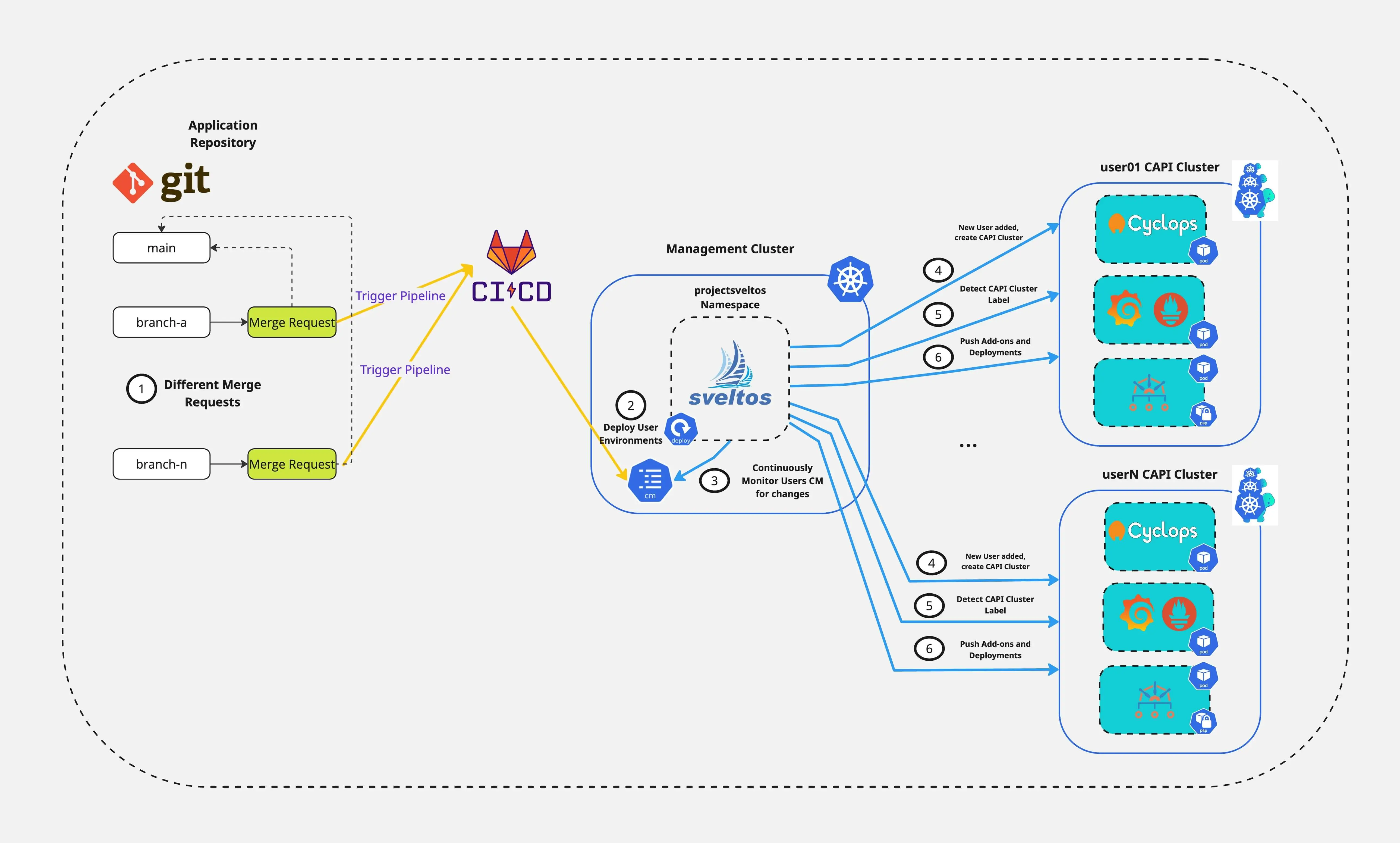Talos, Proxmox, OpenTofu: Beginner's Guide Pt.4
Summary:
Talos Linux Kubernetes module updates for ongoing operations.
Summary:
Talos Linux Kubernetes module updates for ongoing operations.
Summary:
An easy way to migrate ArgoCD running on an RKE2 cluster from Ingress NGINX to Cilium Ingress.
Summary:
This is part 3 of the step-by-step guide to creating Kubernetes managed clusters on Azure Cloud using Cluster API (CAPI) and Sveltos! We will give platform teams and seasonal engineers a simple, secure, and flexible way to build Kubernetes clusters.
Summary:
This is a quick summary of updating Docusaurus from v3.8 to v3.9 and what the required modifications/steps are.
Summary:
This is part 2 of our series. Here, we show how to use Cluster API (CAPI) to create Azure Kubernetes managed clusters. We’ll use Cilium as our Container Network Interface (CNI) and explore additional features. Follow along to experiment with CAPI and explore the Azure cloud.
Summary:
In this post, we show how to use Cluster API (CAPI) to create Azure Kubernetes managed clusters. We will use Cilium as our Container Network Interface (CNI) and explore additional features. Follow along to experiment with CAPI and explore the Azure cloud.
Summary:
We have updated MkDocs with the Mike plugin post. Now, it shows only the three most recent versions in the UI. Let's dive into the details!
Summary:
This is a step-by-step guide outlining the process of integrating Docusaurus with Cloudflare Analytics.
Summary:
Sveltos v1.0.0 release introduced a way to manage Kubernetes clusters in restricted network, environments behind a firewall or edge locations. Follow along to understand how the Sveltos Pull Mode works and how it can be deployed.
Summary:
This post picks up where the Flux Operator blog left off, diving deeper to demonstrate the power of Sveltos and Flux for Kubernetes add-on deployment and management. Join the club as we explore what next-level Kubernetes deployments and management look like in action!
Summary:
Learn how to install and use the Flux Operator in a Kubernetes environment and connect it to an on-prem GitLab instance.
Summary:
Learn how to integrate Cilium, Gateway API, cert-manager, let's encrypt and Cloudflare to dynamically provision TLS certificates for ArgoCD.
Summary:
Learn how to implement documentation versioning in MkDocs using Mike. Mike is a plugin designed for managing multiple documentation versions. The guide covers setting up versioning from day one and integrating it with GitHub Pages for streamlined, automated deployments.
Summary:
The blog post covers an upgrade from Docusaurus v3.4.0 to v3.7.0, along with tips, tricks, and key lessons learned.
Welcome to part 4 of the dual-stack series! In parts 1, 2, and 3, we walked through how to set up dual-stack networking on a Proxmox server using our Internet provider. We also showed you how to deploy RKE2 Kubernetes clusters and share both IPv4 and IPv6 services across them. Now, in the final part of the series, we are diving into some of the most commonly used features of Cilium for a home lab setup! Let’s get started!

Are you ready to simplify how your Platform team spins up and down development environments while improving DevX? In this post, we show how Cluster API(CAPI), Sveltos, and Cyclops work together. They automatically create Kubernetes environments. This setup lets developers easily interact with and manage their applications. It is not magic, it is the power of Sveltos combined with the right tooling!

Welcome to part 3 of the dual-stack series! In part 1 and part 2, we discovered how to enable dual-stack on a Proxmox server using our Internet provider and deploy RKE2 clusters. In today's post, we continue our journey and enable a Cilium Cluster Mesh between two RKE2 clusters. The goal is to share IPv4 and IPv6 services between the different clusters effortlessly. Let’s dive in!

Welcome to part 2 of the dual-stack series! In part 1, we covered how to enable IPv6 Prefix allocation using pfsense on Proxmox with Fritz!Box as a home router. The setup allows virtual machines in a dedicated interface to receive an IPv4 and an IPv6 address. If you have completed part 1, you can continue with the dual-stack RKE2 setup powered by Cilium.

Welcome to the first post in the dual-stack deployments series! In part 1 of the series will set the stage for everything to come. Dual-stack is when a machine can talk both IPv4 and IPv6. Part 1 aims to guide users through enabling and configuring IPv6 prefix allocation for virtual machines in a Proxmox environment, using pfSense. The setup will be used later on for Kubernetes Deployments, Service Mesh and Global Service Sharing powered by Cilium.

I love it when work and holidays come together! In this post, I am sharing my recent travel to California during February 2025 - a bit of an off-topic post for my usual content.